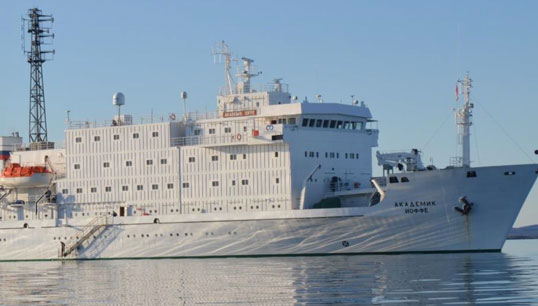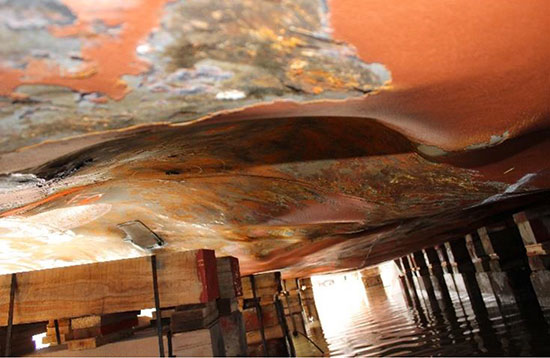Canada flags Arctic cruise risks from outdated maps and limited search and rescue
28 June 2021

Concerns over the unique risks that the rapidly expanding expedition cruise industry poses to environmentally sensitive areas has been raised by Canada's Transportation Safety Board (TSB).
The warning comes in a report on an investigation into the grounding of a Russian-flagged passenger ship in a remote and vulnerable part of the Canadian Arctic, which had not been surveyed to modern hydrographic standards.
Investigators found that the bridge team on the 6,450gt Akademik Ioffe had missed more than four minutes of low water depth warnings because the echo sounder visual and aural alarms had been switched off before the ship ran aground near the Astronomical Society Islands, 78nm NNW of Kugaaruk, Nunavut, in August 2018.
The ship sustained serious hull damage, with two ballast water tanks and two bunker tanks breached, but it refloated on a flooding tide later in the day. The 102 passengers were transferred to another passenger vessel on the following day.
The TSB said the ship's master had not been aware that the Canadian chart he had used for voyage planning contained outdated and partial bathymetric data – even though this was indicated on the chart.
Investigators said no additional precautions had been taken and extra watchkeepers had not been assigned or requested, as required by the vessel's safety management system when it entered the narrows between the Ross Peninsula and the Astronomical Society Islands.
Consequently, the Officer of the Watch (OOW) was multitasking, the helmsman was busy steering the vessel, and no other crew were tasked with monitoring the echo sounders and keeping lookout.
The bridge team had failed to notice the under-keel water depth steadily decrease, and the alarms for both echo sounders were turned off on all watches because they were deemed to be a nuisance.
Investigators said the OOW also had a 'false sense of having enough sea room' because the electronic chart's scale was reduced to 1:250 on the ECDIS, compared with 1:500 000 on the corresponding paper chart.

Akademik Ioffe was on charter to a Canadian expedition tour operator at the time of the grounding and the TSB said the commercial relationship may have influenced the master to follow the charterer's recommendations for the proposed new itinerary. 'The fact that the vessel was engaged in a high cost, luxury expedition cruise may have added to that pressure,' the report added.
Operating in the Canadian Arctic 'poses unique risks' – with limited local search and rescue resource in 'harsh' environmental conditions – and the TSB noted that barely 14% of Canadian Arctic waters had been surveyed to modern or adequate standards at the time of the accident.
'The risks associated with unreliable navigation charts for the waters surrounding the Canadian Arctic Archipelago are ongoing and will remain for some time, and so it is important that proper mitigation measures be implemented for the safety of vessels operating in this area,' it stressed.
Potential risk mitigation measures include extra inspections for ships operating in such areas, the mandatory carriage of additional navigational aids, such as forward-looking sonar, and the mandatory use of supernumerary navigational experts with local knowledge.
Tags
More articles
Maritime UK hails progress on Maritime 2050 recommendations
'Real progress' is being delivered on recommendations made in the UK government's Maritime 2050 strategy, according to a new report issued by Maritime UK.
Sails of the century
MAIB report into cargo vessel grounding puts safeguarding on ECDIS and voyage planning in the spotlight
The UK Marine Accident Investigation Branch (MAIB) has advised ship managers Misje Rederi AS to review the number of watchkeepers on its vessels in a report into the grounding of the general cargo vessel Kaami on the west coast of Scotland.
